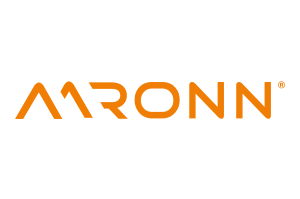Interview with Teppo Hemiä, CEO Wirepas
5G is more than mobile communications
With DECT-2020, ETSI has standardized a wireless technology that is to become part of 5G in the future but has no mobile sommunications roots. It promises reliable data transmission in networks with high end-node density - without major installation and management effort.
Markt&Technik: DECT2020 is considered Europe's contribution to 5G. What exactly is DECT2020?
Teppo Hemiä: DECT-2020 NR is the new global IoT standard first published by ETSI in October 2020. It essentially requires the use of a wireless mesh topology when using the spectrum that has been exclusively used by DECT technologies to date. In the future, all devices will be able to route the data traffic of other devices autonomously to a defined destination point. The standard supports the autonomous data communication of millions of connected devices and enables every company to set up and operate its own local network transparently and without investing in a dedicated network operator infrastructure.
It is envisaged that sensors or actuators act as transmitters and decentrally operating routers (so-called RDs). These are connected directly or via several hops to other sensors and actuators or to termination points (so-called FTs). DECT-2020 NR is designed to support diverse industrial IoT applications that require reliable, low-latency communication. The initial trigger for the development of a new standard was the request to TC DECT to enable IMT-2020 compliant use of the allocated spectrum. (Editor's note: In the IMT-2020 (International Mobile Telecommunications-2020) standard, the ITU-R (International Telecommunication Union, Radiocommunication Sector) defined requirements for 5G networks, devices and services in 2015).

Who are the drivers in ETSI standardisation and how are non-European countries/companies positioning themselves?
The driving companies in the ETSI TC DECT, in which the technical standards are developed, are Wirepas, Nordic Semiconductor and Sennheiser, all of which are also responsible as rapporteurs for one or more releases or partial aspects of the standard. In addition, organisations such as the OVE (Austrian Electrotechnical Association) and the DECT Forum have actively supported the work.
DSPGroup, Gigaset, Panasonic and Shure regularly participate in the technical work of the ETSI TC DECT. Thus, well-known non-European companies are also involved in the development.
For which applications and services was DECT2020 developed?
The new standard fills a current gap in IoT connectivity for applications that do not require broadband and at the same time highly available data connections. The provision of local networks is made possible specifically by the installed sensors and actuators, without the need to operate and pay for a dedicated infrastructure for each data point. It addresses industrial applications that require either Massive Machine Type Communications (mMTC) for high device density networks and/or Ultra-Reliable Low Latency Communications (URLLC), a highly reliable low latency connection.
The standard thus adds an alternative to the 5G world dominated by 3GPP and traditional telecom equipment manufacturers. It uses modern radio technologies such as OFDM modulation, efficient channel coding and fast retransmissions of the physical layer, such as Hybrid Adaptive Repeat and Request (HARQ).
In addition, DECT-2020 NR has its own 1.9 GHz spectrum, which reduces susceptibility to interference. The new standard raises mMTC and URLLC performance to a completely new level of performance and offers users in industry in particular the flexibility they need to realise large and highly complex applications and to use them in an identical way almost anywhere in the world.
How does DECT2020 fit into the 5G family?
DECT-2020 NR was published last year and is expected to be recognised as a 5G standard by the ITU in October this year. Thus, DECT-2020 NR offers an alternative approach for establishing local area networks in the industry. It will be the only 5G standard to date not dominated by the traditionally infrastructure-intensive telecommunications industry.
The approach is based on a flat system architecture that can be easily integrated into any industrial (today mostly wired) ICT system without the need for an antenna-based private or public 5G radio network. DECT-2020 NR is completely flexible in terms of the location of the back-end or data endpoint and can process data both on-site and in a public cloud.
What distinguishes DECT2020 from existing radio technologies?
The DECT-2020 NR technology creates new usage possibilities for local data collection and control of devices. Private networks can be established locally by industrial companies, solution providers and other players – own solutions and services can be developed and operated without ongoing costs for data communication. The DECT-2020 NR system will be very easy to install and control.
Due to the decentralised device-based solutions, it can be deployed (almost) anywhere in a very short time, independent of the industry. DECT-2020 NR enables autonomous and automatic operation with minimal maintenance. With a dedicated global frequency band in the 1.9 GHz range, it offers an extremely low-interference environment and the best conditions for interference management.
For which target markets is DECT2020 suitable?
The new standard is used in a variety of different industries - for example, in the integration of decentralised energy generators or storage units, in smart metering or active building energy management. In the field of Industry 4.0, some applications will also be economically feasible in the future without laying cables. In the management of buildings, for example, all sensors, actuators, lighting, or fire protection equipment in the entire building can be connected to a single network. In the manufacturing industry, every machine can be monitored. Bottlenecks can be identified, manufacturing processes optimised and fail-safety increased - in the most demanding environments, both indoors and outdoors.
How far along is the development of DECT2020 modem chips and modules? When will the first components and systems be available?
The DECT-2020 NR standard was deliberately developed with already available technologies in mind - it was not the goal to define a new class of communication hardware. The first generations will use device chipsets or modems that incorporate, for example, OFDM access, fast layer 1 retransmission (HARQ) scheme and channel coding, as well as the physical design used in Wi-Fi solutions. We have clear indications from chipset manufacturers that DECT 2020 functionality can be supported with existing hardware through firmware modification, enabling rapid product introduction and broad integration into product designs. We expect DECT-2020 modules or chipsets from well-known manufacturers to be available in the second half of 2022 and the first system implementations to begin.
What are Wirepas' goals with DECT2020? What is the roadmap for DECT2020?
With conventional technologies and operator models, it is difficult to digitise significant parts of industrial value creation economically. We have set ourselves the goal of counteracting this circumstance and being a sustainable alternative or supplement in enterprise IoT. We want to offer companies the possibility to always remain the owner of the data and to build and control networks autonomously or without dedicated network operators.
In the next 24 months, we expect to see building blocks based on the standard that support autonomous operation of local 5G networks, have high-performance radio power and are future-proof enough to ensure a steady increase in capacity and performance without the risk of cost explosions. We are paving the way for sustainable IoT adoption beyond cellular solutions, eliminating the need for recurring charges, infrastructure, radio towers and dedicated equipment such as radio repeaters.
At Wirepas, we closely monitor feedback from the markets to further develop the standard and ensure the use and implementation of use cases in industrial and commercial environments. Our offer consists of a standard-compliant transport and routing layer, which we already have in the field with analogue functional principle in 4 million terminals of Ecosytem partners in 2.4 GHz and Sub GHz bands.








